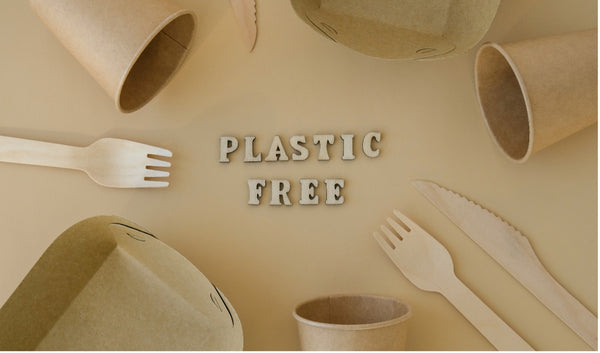Plastics are without a doubt the largest pollutants and environmental issues we are now facing on the globe, along with greenhouse gas emissions and food waste. Unfortunately, hundreds of millions of single-use trays, cans, containers, are still discarded each day all around the world.
Thankfully, there are many alternatives to these plastic pollutants. Disposable food containers are convenient and a safe, hygienic method to transport food for takeout, but those made of traditional plastics have a terrible impact on the environment. Fortunately, the demand for a sustainable substitute for plastic food containers is becoming more and more evident as the zero waste movement gain more momentum. The future is compostable and biodegradable packaging, created from quickly renewable materials.
Here are three takeaway packaging alternatives to plastic that you may use every day to better prepare for a Plastic Free 2022 and 2023.
Option 1. Bagasse Food Packaging :
Bagasse is made from sugarcane stalks that have been collected and then crushed to release their juices, which are subsequently processed and converted into sugar. A dry fibrous material is left behind after this operation. Using a heat source and pressure, this material is then molded into a variety of food packaging goods, such as bagasse takeout boxes, tableware, plates, and take out bowls.

Food packaging made from bagasse is excellent because, unlike many other materials, it does not leave behind any residue, unpleasant odors, or tastes. The flavor of food and beverages served in bagasse packaging is therefore unaffected by any lingering odor.
Bagasse food packaging is completely compostable and biodegradable, minimizing its environmental effects and earning it a reputation as an ecologically friendly product in general. Its production method is also more environmentally friendly since it uses so little energy.
How useful are compostable bagasse materials for food packaging?
Bagasse is great for food and beverage containers, as well as takeout containers and packaging. This material's natural qualities make it particularly effective in the following ways as explained below:
• There are no additional chemicals necessary to make the product water and grease resistant.
• Microwave and freezer safe.
• Excellent thermal characteristics. It is microwave and freezer safe and is suitable for temperatures ranging from -13°F to 428°F.
• Strong and long-lasting. The substance is stronger and more durable than polystyrene and paper items.
• The properties of insulation keep the contents warmer for longer than your typical plastic, foam and aluminum products.
Option 2. PLA Packaging:
PLA is an abbreviation for polylactic acid, which is derived from renewable sources such as sugarcane or maize starch. Which are created from plant-based renewable resources. They are also commercially biodegradable and use 68% less fossil fuel resources to manufacture than your standard plastic. This makes them a more environmentally friendly option than their plastic, foam or aluminum equivalents. The material has a great combination of translucency, strength and toughness. They are also strong, hold well in beverages, resemble a plastic look, and are thought to be more sanitary due to their single-use nature.
Every day, nearly 500 million single use plastic straws are used in the USA. Plastic can then take up to 500 years to degrade. PLA Straws, as an alternative, provide a lot of advantages.
Important things to keep in mind before using PLA Straws:
• PLA Straws are made entirely of renewable resources and are both biodegradable and compostable.
• The PLA straws degrade after 12 weeks. 90% of the material will be composted after 6 months.
• PLA Straws should only be used in cold beverages; they should not be used in hot liquids exceeding 120 degrees Fahrenheit.
• They are a handy match for fast food businesses, restaurants, homes and other eateries since they can be disposed of and composted with your food waste.
Option 3. Pulp Packaging:
Pulp packaging is created from plant fiber pulp that is destined for trash after harvesting and food manufacturing. It is a natural and renewable resource. Natural ingredients utilized include sugarcane bagasse and maize starch. They are readily formed and completely biodegradable.

Pulp fiber containers are great for meals and salads that have already been prepared. The bowls are ideal for on the go dining, takeout, takeaway and catering at outdoor events and festivals. They are not appropriate for soup and sauce based dishes such as curries, as is the case with the Bagasse series. The reason being is that the containers and pulp comes uncoated which will overtime absorb the moisture of your favorite soups, curries and sauces.
Our Conclusion:
By removing plastic from your life, you are not only reducing your personal contribution to trash, but you are also modelling more sustainable living for others around you which will help make a change. Celebrate your accomplishments and help spread the word about how critical it is to rethink our everyday actions and what we expect from the businesses we buy from.
Many businesses in the United States are switching to compostable takeaway packaging.






